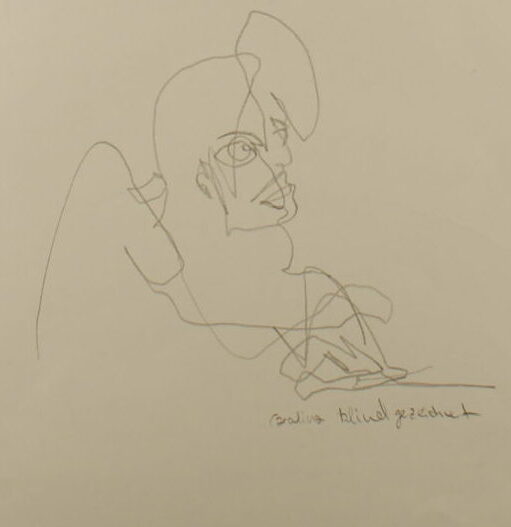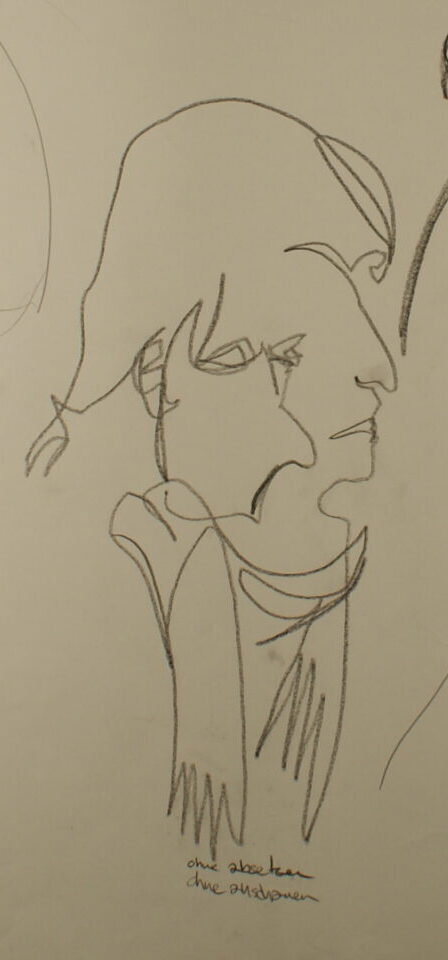

Nicolaïdes and Edwards propose different ideas of why blind contour drawing is an important method of drawing for art students. Nicolaïdes instructs students to keep the belief that the pencil point is actually touching the contour.[1] He suggested that the technique improves students’ drawings because it causes students to use both senses of sight and touch.[2] Edwards suggests that pure contour drawing creates a shift from left mode to right mode thinking. The left mode of the brain rejects meticulous, complex perception of spatial and relational information, consequently permitting the right brain to take over. Blind contour drawing may not produce a good drawing; however, it helps students to draw more realistically, rather than relying on their memorized drawing symbols.[2][4] Blind contour drawing trains the eye and hand to work as a team, and it helps students to see all of the details of the object.[4]
